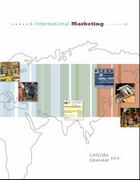Answered step by step
Verified Expert Solution
Question
1 Approved Answer
Health Economics Homework 3 The following are a few problems to solve related to Economic Evaluation. Please circle numeric answers and show all work to
Health Economics
Homework 3
The following are a few problems to solve related to Economic Evaluation. Please circle numeric answers and show all work to get credit.Please upload it when you are finished.
- An article in JAMA by Mandelblatt et al (2002) compared the societal costs and benefits of human papillomavirus (HPV) testing, Pap testing, and their combination to screen for cervical cancer. The following table summarizes some results, low cost to high cost (numbers below have been altered from the published article). Costs include screening and treatment costs, discounted over the individual's expected lifetime.
| Strategy | Cost ($) | QALYs Saved | Incremental Cost | Incremental QALY | Incremental CE ratio (ICER) |
|---|---|---|---|---|---|
0. No screening | 6,000 | 24 | - | - | - |
1. Pap every 3 years to age 75 | 7,400 | 28 | |||
2. HPV every 3 years to age 75 | 7,800 | 30 | |||
3. Pap every 2 years to age 75 | 8,000 | 30 | |||
4. Pap + HPV every 3 years to age 75 | 8,200 | 32 | |||
5. HPV every 2 years to age 75 | 8,500 | 35 | |||
6. Pap + HPV every 2 years to age 75 | 9,000 | 35 |
- Identify all dominated screening strategies. Recall a strategy is dominated if it costs more than an equally or more effective strategy, or it is less effective than another strategy that costs the same or less. List the strategy number(s) here.
- Fill in the table above. Calculate the incremental cost, incremental QALYs, and ICERs for all economically rational strategies (relative to strategy 0, no screening). Note: You do not have to fill out rows for dominated strategies, but you can.
- The local health district has asked your opinion on the "best" strategy from a public health perspective. What do you tell them?
- The following information has been gathered on the costs and effectiveness of the two treatments, A and B. In this problem, costs and consequences are not discounted.
| Treatment A | Treatment B | |
|---|---|---|
| Mortality rate | 4% | 5% |
| Life expectancy for survivors | 25 years | 10 years |
| Initial treatment cost | $20,000 | $5,000 |
| Follow up costs, year 1 | $4,000 | $2,000 |
| Annual follow up costs, all subsequent years | $800 | $400 |
- What is the total cost for the survivors receiving treatment A?
- For decedents (assuming sudden death after receiving initial treatment)?
- What is the total cost for survivors receiving treatment B?
- For decedents (assuming sudden death after receiving initial treatment)?
- What is the expected cost for those patients receiving treatment A?
- Treatment B?
- What is the expected benefit (years) for those patients receiving Treatment A?
- Treatment B?
- Draw a decision tree showing the costs and benefits of each treatment option.
- What treatment should be chosen, if lowest cost per benefit is the criterion?
- Based on the article "Forbidden Topic in Health Policy Debate: Cost Effectiveness," what are some of the pros and cons to using cost-effectiveness at a national level? (A few sentences will suffice.)
Step by Step Solution
There are 3 Steps involved in it
Step: 1

Get Instant Access to Expert-Tailored Solutions
See step-by-step solutions with expert insights and AI powered tools for academic success
Step: 2

Step: 3

Ace Your Homework with AI
Get the answers you need in no time with our AI-driven, step-by-step assistance
Get Started


